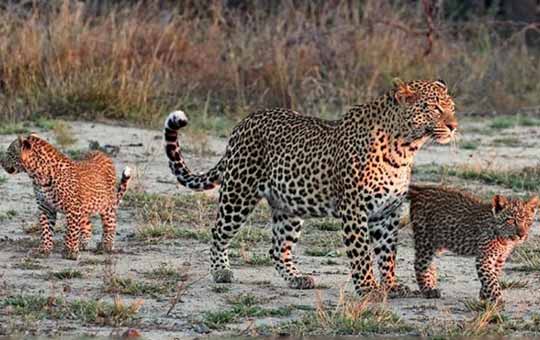Kumbhalgarh Wildlife Sanctuary, Rajasthan
Tucked away in the majestic Aravalli Hills, Kumbhalgarh Wildlife Sanctuary in Rajasthan is a hidden gem for nature lovers, wildlife enthusiasts, and history buffs alike. Spread over an area of more than 600 square kilometers, this sanctuary surrounds the historic Kumbhalgarh Fort, a UNESCO World Heritage Site, and offers a rich blend of biodiversity, scenic landscapes, and cultural heritage. It is one of the lesser-explored yet enchanting wildlife sanctuaries in Rajasthan.
Location and Geography
Kumbhalgarh Wildlife Sanctuary spans the districts of Rajsamand, Udaipur, and Pali in southern Rajasthan. It lies approximately 85 km from Udaipur and is easily accessible by road. The sanctuary’s terrain varies from rugged hills, deep valleys, and narrow plains to open grasslands. The sanctuary is named after the Kumbhalgarh Fort, built in the 15th century by Rana Kumbha, which forms the centerpiece of the region.
Flora and Fauna
The sanctuary is home to a diverse range of flora and fauna, thanks to its varied topography and climate. It is one of the few places in Rajasthan where you can still find green forests and dense vegetation, offering a stark contrast to the desert landscapes the state is known for.
Flora: The vegetation is predominantly dry deciduous, with forests of Dhok, Salar, Khair, and Churel trees. Bamboo and various grasses also thrive here, supporting herbivorous animals and creating a balanced ecosystem.
Fauna: Kumbhalgarh Wildlife Sanctuary shelters many species of animals, including leopards, Indian wolves, sloth bears, jackals, hyenas, and jungle cats. Herbivores like nilgai (blue bull), chinkara, sambar deer, and wild boar roam freely across the park. Bird lovers will find the sanctuary equally rewarding, with over 200 bird species, including peacocks, grey junglefowl, parakeets, golden orioles, bulbuls, and even some migratory birds in the winter months.
The sanctuary is also an important habitat for the Indian wolf, which is a relatively rare and elusive species in the Indian subcontinent.
Activities and Experiences
Kumbhalgarh Wildlife Sanctuary is best explored through jeep safaris and trekking trails. Jeep safaris can be arranged from nearby towns or through authorized tour operators and usually take you deep into the forested interiors, offering chances to spot wildlife and enjoy panoramic views of the Aravalli ranges.
Trekking is a popular activity in the sanctuary, with trails ranging from easy to moderately challenging. One of the most scenic routes is the Kumbhalgarh to Thandi Beri trail, which passes through thick forest areas and offers opportunities to spot birds and small mammals.
Horse safaris are another unique way to explore the sanctuary, especially since the region has a rich tradition of horse riding. Some local operators offer guided horse safaris through forest paths and tribal villages.
Best Time to Visit
The best time to visit Kumbhalgarh Wildlife Sanctuary is from October to March, when the weather is pleasant and ideal for outdoor activities. During the monsoon (July to September), the sanctuary turns lush green and offers beautiful scenery, though wildlife sightings may be less frequent due to dense vegetation. The summer months (April to June) can be extremely hot, making it less comfortable for travel and exploration.
How to Reach
- By Air: The nearest airport is Maharana Pratap Airport in Udaipur (about 85 km away).
- By Rail: The nearest railway station is Falna (49 km away), which is well connected to major cities.
- By Road: The sanctuary is well connected by road to Udaipur, Rajsamand, and Nathdwara. Private taxis and buses are easily available.
Nearby Attractions
- Kumbhalgarh Fort: The massive fort with the second-longest continuous wall in the world is a must-visit.
- Ranakpur Jain Temples: Located about 50 km away, these intricately carved marble temples are a marvel of architecture.
- Haldighati: A historic battlefield associated with Maharana Pratap, located nearby and rich in Rajputana heritage.
